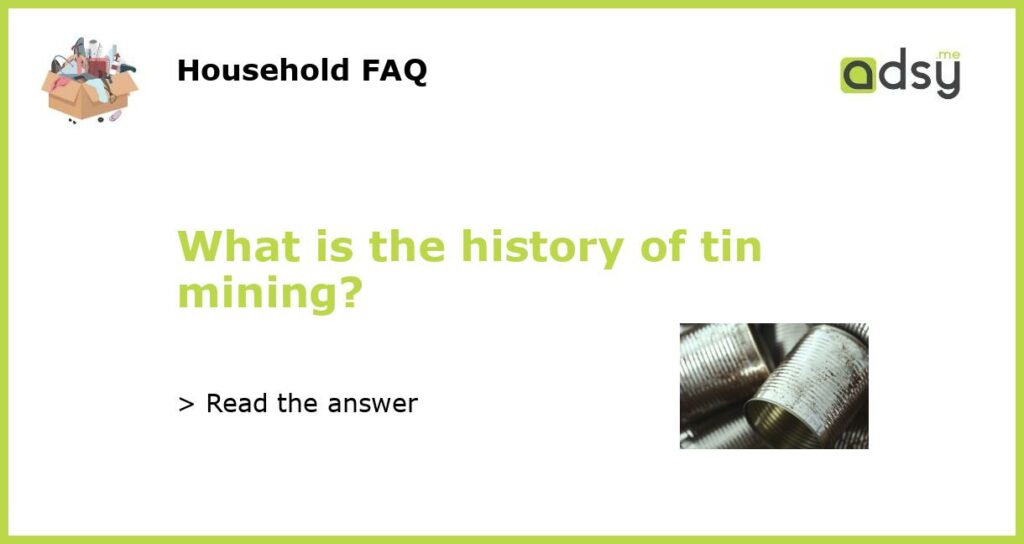The History of Tin Mining
Tin mining has played a significant role in shaping the history and development of many regions around the world. From ancient civilizations to modern industrial societies, the mining of tin has had a profound impact on societies, economies, and the environment. Let’s explore the history of tin mining and its importance throughout the ages.
Early Beginnings: Tin in Ancient Times
The earliest known use of tin dates back to the Bronze Age, around 3000 BC. During this time, tin was alloyed with copper to create bronze, a stronger and more durable material than pure copper. This new alloy revolutionized tools, weapons, and everyday objects, and the demand for tin quickly grew.
Around 2000 BC, the first tin mines appeared in what is now modern-day Turkey. The Hittites, an ancient civilization, were among the first to mine and trade tin. The tin was used to produce bronze and was an essential ingredient in the rise of empires and the spread of ancient civilizations.
Tin Mining in Southeast Asia: The Ancient Hub
While tin mining was practiced in various parts of the world, Southeast Asia quickly emerged as a major player in the global tin market. The region’s rich deposits and proximity to important maritime trade routes made it a natural hub for the production and distribution of tin.
By the 7th century, the Malay Peninsula, Thailand, and Indonesia had become important tin-producing regions. The mining industry flourished, attracting traders from China, India, and the Arab world, who established trading networks to export tin to other parts of Asia and beyond.
The European Boom: Cornwall, England
During the Industrial Revolution, Cornwall in southwestern England became the center of tin mining in Europe. The region’s rich tin deposits, technological advancements, and access to ports made it a perfect location for mining operations.
The tin mines of Cornwall boomed during the 18th and 19th centuries. At its peak, Cornwall produced about 20,000 tons of tin per year, making it the largest tin-producing region in the world. The industry brought prosperity to the region but also suffered from labor disputes and dangerous working conditions.
Tin and the Tin Crisis: The Rise and Fall
In the 20th century, tin continued to be in high demand, especially for the production of solder, a key component in the electronics industry. However, a series of events, including the exhaustion of easily accessible deposits and the emergence of new mining techniques and materials, led to the decline of the tin mining industry.
The tin crisis of the 1980s further exacerbated the industry’s woes. Surges in production from new tin-producing countries like Brazil and Malaysia led to a significant drop in tin prices, making it economically unviable for many traditional tin-mining regions to continue operations.
Modern Tin Mining: Sustainable Practices and Global Market
Despite the challenges, tin mining continues to be an important industry today. Modern mining practices have become more sustainable, with efforts to minimize environmental impact and ensure the well-being of both workers and local communities.
China is currently the largest producer of tin, followed by Indonesia and Myanmar. These countries, along with others like Bolivia and Brazil, have significant tin deposits and continue to play a crucial role in the global tin market.
As technology and industry continue to evolve, the future of tin mining remains uncertain. However, with the increasing demand for tin in renewable energy technologies and the growth of electric vehicles, the importance of sustainable and responsible tin mining practices will only grow in importance.






